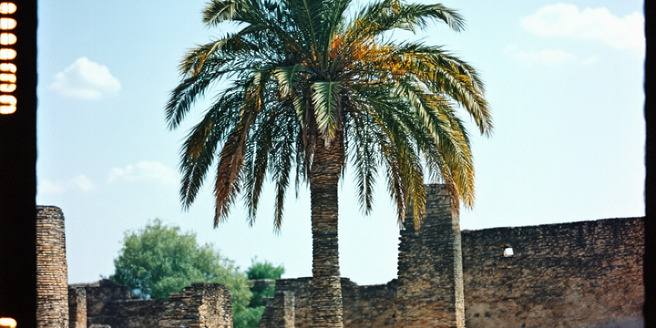An Ancient Symbol of Victory
| Time Period | Civilization | Significance |
| Ancient Greece | Greeks | Victory at Olympic games |
| Roman Empire | Romans | Symbol of triumph |
| Ancient Egypt | Egyptians | Life and immortality |
| Ancient Assyria | Assyrians | Military dominance |
| Byzantine Era | Byzantines | Divine blessing |
| Medieval Europe | Europeans | Religious processions |
Cultural Significance Across Civilizations
The palm branch is a timeless emblem that spans across numerous civilizations, each attributing unique cultural meanings to its form. In ancient Greece, the palm was not just a plant but a symbol of triumph, woven into the very fiber of their athletic festivals. Moving eastward, it adorned the art and mythology of Egyptians, symbolizing eternal life and divine presence. For the Romans, these fronds represented victory, held aloft in celebratory processions following conquests. Even in the Byzantine Empire, the palm stayed relevant, representing victory over death and serving as a potent Christian symbol. Its ubiquitous presence shows how diverse societies, separated by time and geography, converge in attributing profound significance to this natural emblem of success and spiritual achievement.
Religious Connotations and Ritual Uses
From sacred texts to ceremonial rituals, the palm branch holds a revered place in religious rites around the world. Among Christians, it is prominently featured in the commemoration of Palm Sunday, representing the triumphant entry of Jesus into Jerusalem. Judaically, palm branches are integral to the festival of Sukkot, symbolizing the impermanence of dwellings in the desert and the fragility of life. Meanwhile, Islamic traditions also recognize its spiritual symbolism, often featured in art and architecture as a representation of paradise. In Hinduism, it operates in ritual purification ceremonies, emphasizing an underlying interconnectedness through ecological symbols. Across these traditions, the palm branch serves not only as a botanical specimen but as a conduit for expressing devotion and celebrating life’s divine aspects.
The Role in Festival Celebrations
Palm branches grace a multitude of cultural festivals, playing a ceremonial role that ties nature to grand human occasions. In tropical regions, palms naturally ornament festivals, from Caribbean carnivals to African harvest celebrations, where they serve both decorative and symbolic purposes. Festivals like Southern European Palm Sunday parades are animated by the rhythmic waving of palm fronds, enlivening streets and churches alike. In the South Pacific, palms are not merely visual centerpieces but form the structural basis for festival settings, from canopies to vibrant costumes. The ubiquitous palm branch, woven through music, dance, and folklore, marks a bridge between the natural world and human celebration, highlighting its enduring relevance in our shared cultural tapestry.
Representation in Art and Literature
The palm branch has long inspired artists and writers as a motif of resilience, vitality, and peace. Its graceful form and rich symbolism make it a versatile subject across various creative mediums. In classical art, it occupies a prominent place, from the frescoes of Herculaneum to medieval manuscripts, each illustrating its timeless beauty. The Renaissance period brought a revival of botanical symbolism, with palms often representing victory and eternal life, themes resonant in Christian iconography. In literature, it graces numerous works, symbolizing peace in the verses of Homer, triumph in Shakespearean drama, and even in the introspective pages of contemporary novels. As both inspiration and subject, the palm branch continues to transcend time, manifesting in diverse artistic expressions that communicate humanity’s enduring admiration for natural symbols.
Eco-Benefits of Palm Trees
Palm trees are more than just iconic silhouettes against a sunset backdrop; they are environmental champions offering a wealth of ecological benefits. Serving as habitat for diverse wildlife, they support complex ecosystems that thrive in and around their foliage. In many cultures, palm trees are also valued for their various uses, including the production of food, shelter, and materials. Their dense root systems combat soil erosion, stabilizing coastal and desert regions against harsh climatic conditions. Moreover, palms contribute significantly to the carbon economy by efficiently sequestering carbon dioxide, a vital function amid growing concerns of climate change. As keystone species in tropical environments, they not only embellish landscapes but play crucial roles in sustaining biodiversity, highlighting the importance of their preservation in natural ecosystems.
Modern Uses and Innovations
In today’s landscape of innovation, palm branches are more than mere historical footnotes; they are at the cutting edge of sustainable development. Their fibers are increasingly used in creating biodegradable products, offering eco-friendly alternatives to plastics. With the growing emphasis on environmental responsibility, researchers are continually discovering new uses for palm derivatives. Many companies are turning to palm-derived materials to produce renewable energy, developing palm biomass methods for sustainable fuel. In architecture, palm thatch provides a natural solution to building cooling systems, minimizing reliance on non-renewable resources. From the cosmetic industry utilizing palm oil to advancements in traditional crafts using palm fronds, modern innovations continue to expand the palette of palm applications, melding ancient tradition with contemporary necessity.
Palm Branches in Sustainable Practices
Palm branches are central to innovative sustainable practices that align with modern ecological goals. Their natural properties are harnessed in creating sustainable construction materials, given their strength and renewability, which serve as effective alternatives to deforestation-heavy options. In addition, research continues to explore new ways to optimize the use of palm products in various industries. In agriculture, palm mulch is emerging as a vital part of permaculture systems, enriching the soil without harmful chemical additives. Furthermore, as natural resources become strained, palm leaves are utilized in the crafting of eco-friendly fashion, intertwining sustainability with cultural craftsmanship. By integrating these practices with traditional techniques, the use of palm branches in sustainability efforts illustrates the harmonious balance between environmental stewardship and resourceful innovation.
Challenges in Cultivating Palm Trees
Cultivating palm trees presents distinct challenges that impact both agricultural and natural environments. Diseases like lethal bronzing and red palm weevil infestations threaten plantations across the globe, requiring vigilant management and integrated pest control strategies. Climate change also influences palm tree growth, with rising temperatures and erratic weather patterns threatening their natural habitats. Innovative research in genetic modification is being explored to create more resilient palm tree varieties. As coastal erosion accelerates, the fragile ecosystems palms stabilize are increasingly at risk, prompting urgent conservation measures. Balancing the economic benefits derived from palm tree cultivation with environmental and ecological considerations remains a complex challenge for growers and conservationists intent on safeguarding these essential species for future generations.
Conservation Efforts and Future Prospects
As awareness grows regarding the ecological importance of palm trees, conservation efforts are galvanizing to protect these vital species. Initiatives aimed at preserving palm habitats focus on everything from reforestation projects to establishing seed banks that safeguard genetic diversity. Innovative breeding programs aim to develop pest-resistant strains, ensuring resilience against present and future threats. Research into alternative herbicides and organic farming techniques strives to minimize environmental impact while maintaining yield. Collaborative international efforts work towards sustainable palm product certifications, ensuring a balance between industry demand and ecological sustainability. As palm trees continue to face existential threats, these determined conservation efforts illuminate a promising path forward, securing their place in both natural and cultivated landscapes.










